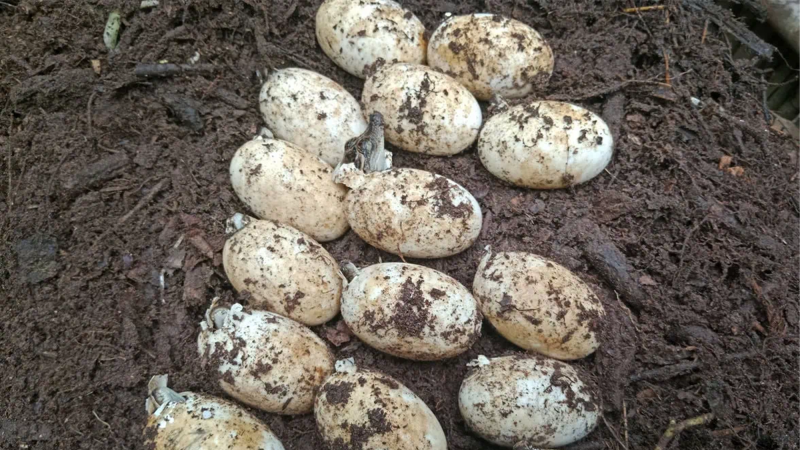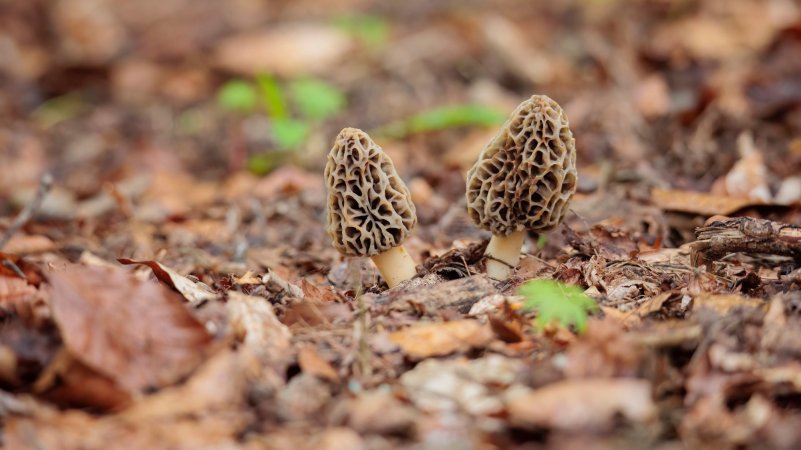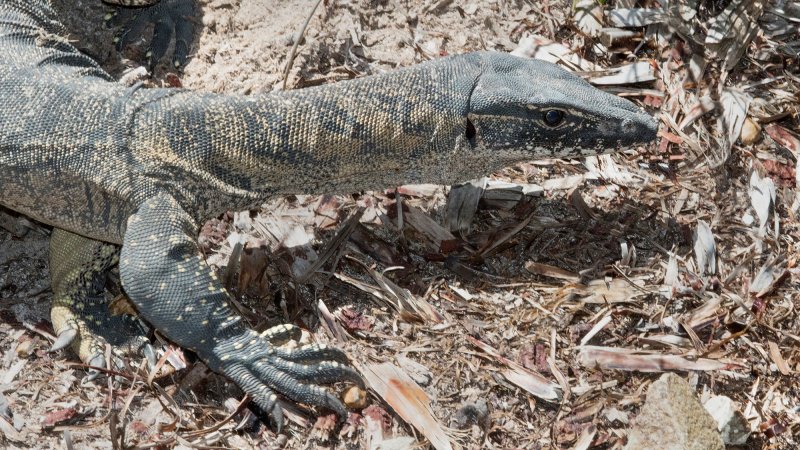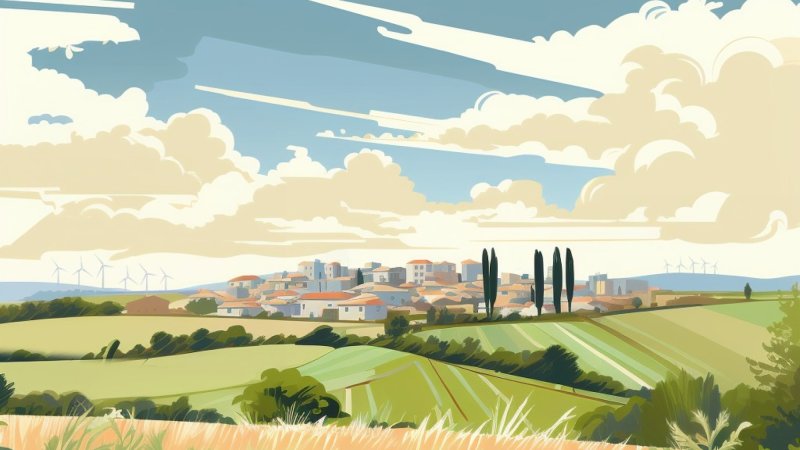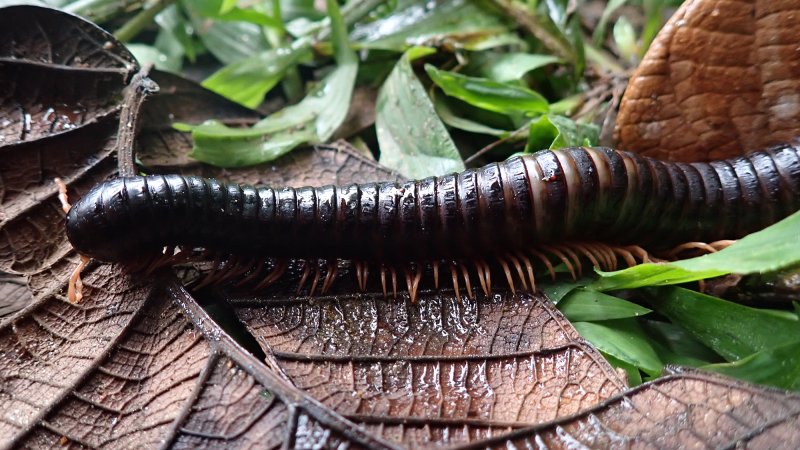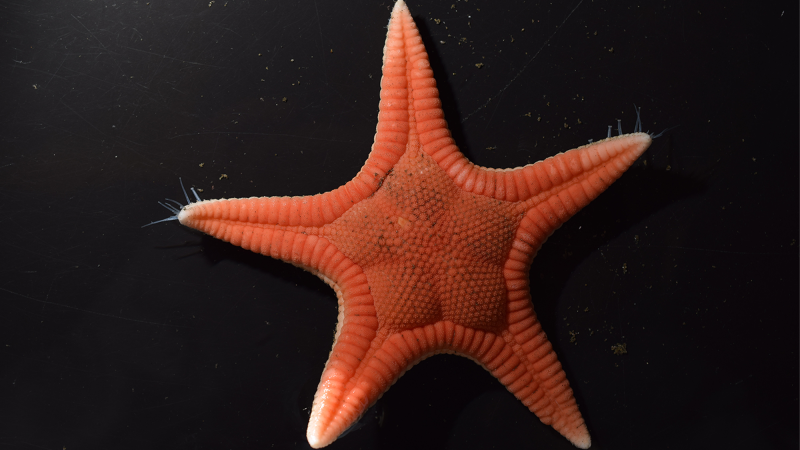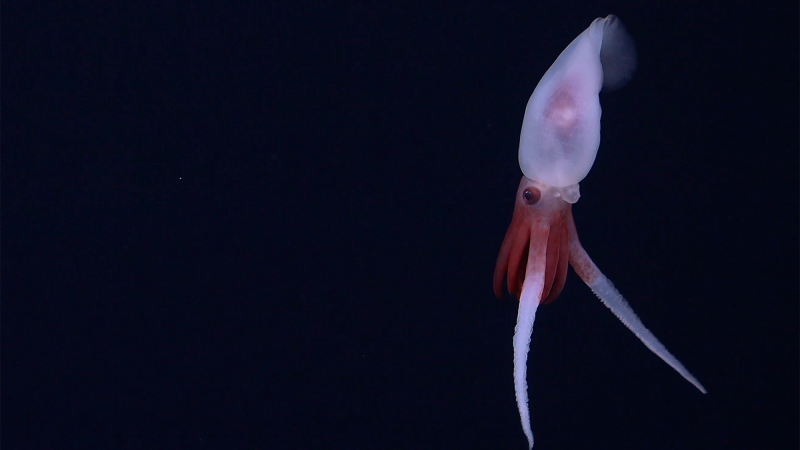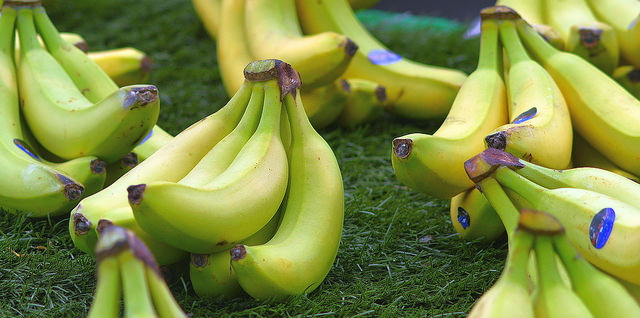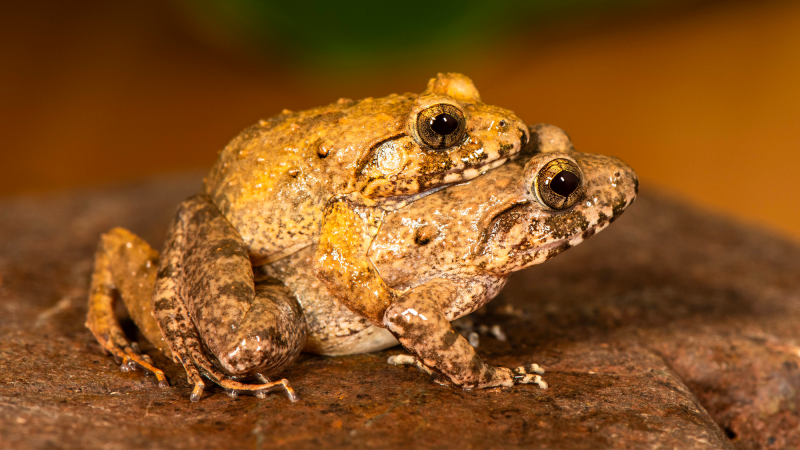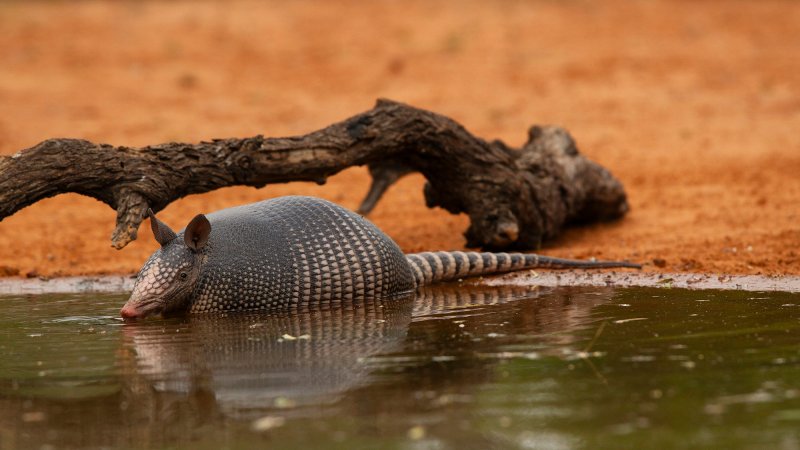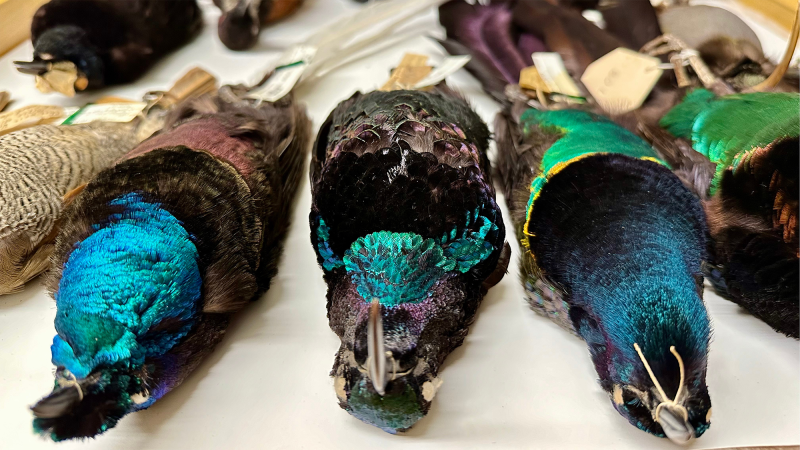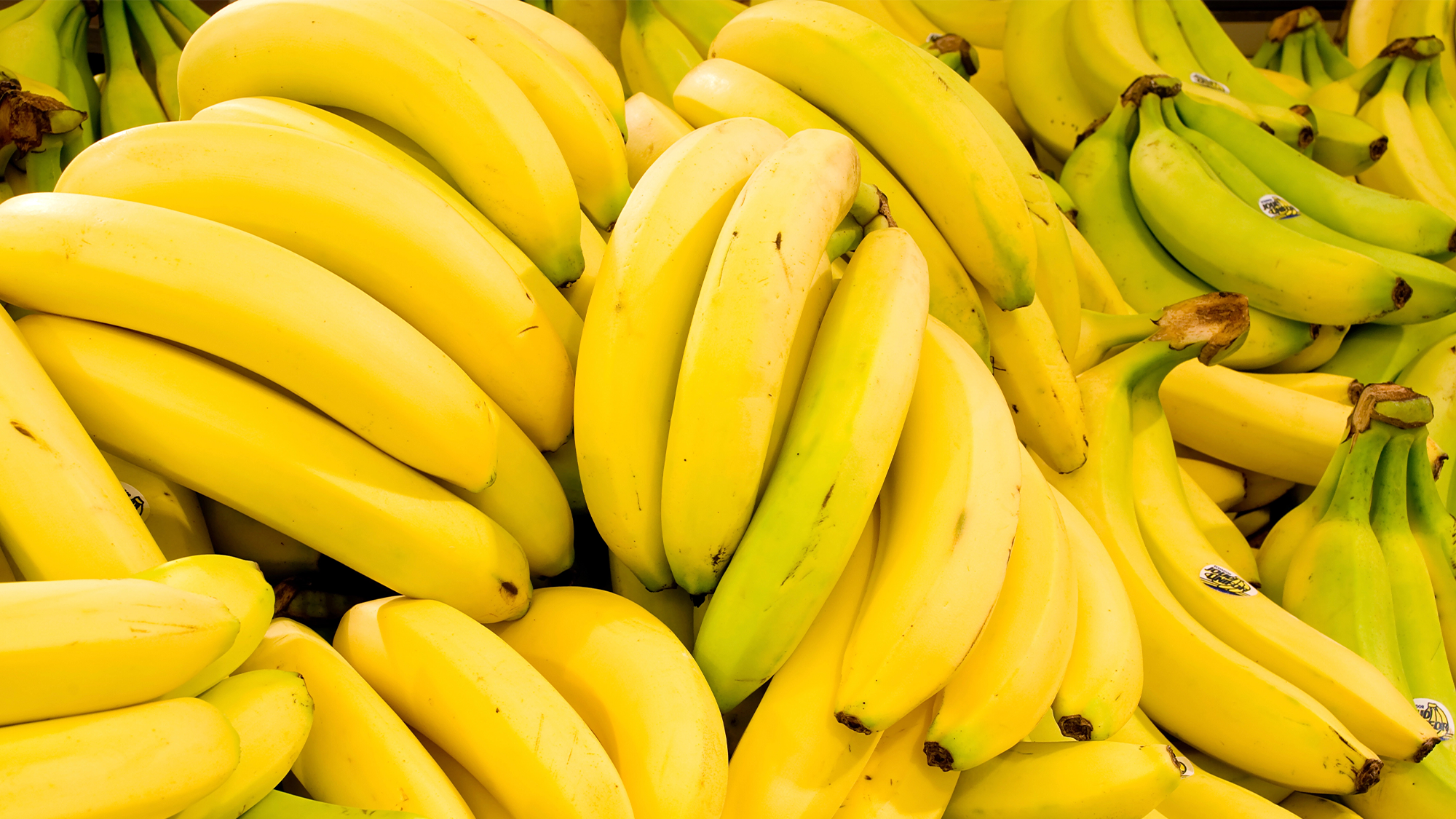

The bright bananas dotting your fruit bowl are in some serious trouble. A popular type of banana is facing extinction from a fungal pathogen. The disease Fusarium wilt of banana (FWB) blocks the flow of nutrients to the fruit and makes it wilt. During the 1950s, the pathogen wiped out commercial banana crops and made one species–Gros Michel bananas–functionally extinct.
But not all is lost for this colorful fruit. New research from an international team of scientists has pinpointed the molecular mechanisms behind the microbe that destroys bananas and it opens the door to new treatments and strategies against the pathogen. The findings are detailed in a study published August 16 in the journal Nature Microbiology.
[Related: The banana as we know it is doomed.]
What is hurting bananas?
The crop failures are due to a fungal pathogen with a very long name–Fusarium oxysporum f.sp. Cubense (Foc) tropical race 4 (TR4). Abbreviated as Foc TR4, this fungus decimated several banana crops in the 1950s and wiped out one entire species, but bananas aren’t the only plants at risk.
“As a species complex, Fusarium oxysporum can infect over 100 different plant hosts,” study co-author and University of Massachusetts Amherst molecular biologist Li-Jun Ma tells Popular Science.”

Part of this virulence comes down to its genome and the ways it can change. According to Ma, each Fusarium oxysporum genome can be divided into two parts–a core genome and an accessory genome. The core genome does all of the main housekeeping functions of keeping the genome going. An accessory genome is then free to vary from strain to strain and can handle specialized functions–including the ability to infect a specific plant.
Understanding how the pathogen and its genome work on a molecular level is key for developing ways to combat it and prevent more banana species from going extinct.
Not your grandparents’ bananas–or fungus
Over 50 years ago, the first victims of this fungal war were the Gros Michel bananas. Largely in response to banana wilt, the Cavendish variety was bred to be a disease-resistant replacement and is the most popular type of commercially available banana today. This worked for a while, but by the 1990s, there was another outbreak of banana wilt that spread from Southeast Asia to Central America.
Ma and her team have spent the last decade studying how TR4’s genome works to combat the new outbreak of banana wilt in the Cavendish banana. Surprisingly, they found that it is actually not derived from the same pathogen that wiped out crops in the ‘50s.
“We now know that the Cavendish banana-destroying pathogen TR4 did not evolve from the race that decimated the Gros Michel bananas,” Ma said in a press release accompanying the study. “TR4’s genome contains some accessory genes that are linked to the production of nitric oxide, which seems to be the key factor in TR4’s virulence.”
Harmful gasses
In this new study, Ma and co-authors from institutions in the United States, China, and South Africa sequenced and compared 36 different Foc strains from all over the world. These strains include the ones that attack Gros Michel bananas. The sequences revealed that the Foc TR4 that is responsible for the current outbreak of banana wilt. It also uses some accessory genes for two purposes when invading a host. These genes both produce and detoxify fungal nitric oxide.
[Related: Watch ‘tiny tornadoes’ spread plant pathogens.]
“As expected, we found accessory sequences in the TR4 genome that contribute to its virulence, including the production of the harmful gas, nitric oxide, that facilitates the host invasion,” says Ma.

The team still doesn’t know how this gas specifically contributes to disease infestation in Cavendish banana. However, they were able to determine that the virulence of Foc TR4 was greatly reduced if the two genes that control nitric oxide production were eliminated.
“Identifying these accessory genetic sequences opens up many strategic avenues to mitigate, or even control, the spread of Foc TR4,” Yong Zhang, study co-author and a postdoctoral researcher at UMASS Amherst, said in a statement.
‘Always remember to say thank you to a farmer’
In future research, the team would like to better understand how the fungus can produce such a harmful gas without hurting itself. They would like to test various ways to interrupt the production of nitric oxide and explore genes that can take the gas away before it damages plant cells.
Importantly, work like this raises awareness about the dangers of monocropping in agriculture and relying on a single species.
“Growing a single cultivar of any crop, also called monoculture agricultural production, provides breeding ground for the development of pathogens,” says Ma. “To help increase the demand for diverse bananas in the market, we can intentionally pick up different varieties of bananas from the shelf. We can support local producers by shopping locally.”
[Related: Love corn? Thank interbreeding.]
It is also a lesson in the importance of valuing the time and effort of those who produce all of the food we put on our tables.
“We, consumers, should appreciate that bananas or other fruits/vegetables do not grow from grocery stores,” says Ma. “There are tremendous efforts to bring food to our tables and feed our bodies. Always remember to say thank you to a farmer when you see one with dirt and soil all over his/her body.”


